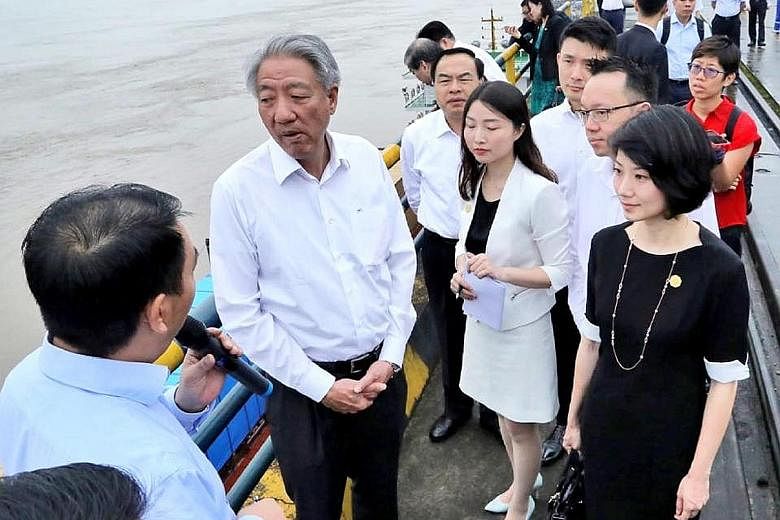Singapore and China are old friends which have been able to nurture and evolve bilateral ties over time to meet their needs and national interests. And today, 40 years after China opened up to the world, the Belt and Road Initiative (BRI) is an area which both countries can work on together, said Deputy Prime Minister Teo Chee Hean yesterday.
"Historically, Singapore has been a key node along the ancient Maritime Silk Road, and remains globally connected today," Mr Teo said in a speech at the 24th China Lanzhou Investment and Trade Fair in north-western Gansu province.
"As globally connected countries, Singapore and China are natural partners for the long-term development of the BRI," added Mr Teo, who yesterday concluded a nine-day visit to China.
The ambitious plan Chinese President Xi Jinping initiated in 2013 aims to revive ancient trading routes on land and sea. They will link China to other parts of Asia, the Middle East, and onward to Africa and Europe through a series of roads, railways, port and industrial parks. Chinese officials have said that China aims to use this to export its overcapacity in heavy industries, build internationally competitive home-grown companies and spur growth in its western provinces.
Mr Teo listed infrastructure connectivity, financial connectivity, cooperation in third countries and professional services as four key areas where both countries can combine their strengths and expertise to build the trading routes.
Speaking to some 500 government officials and business executives, Mr Teo said the Chongqing Connectivity Initiative, the latest joint project between Singapore and China, is one example of how both countries can cooperate to substantially lower logistics costs, and speed up and increase the flow of goods and services.
A key innovation from this initiative is the Southern Transport Corridor, a network of railway lines linking western Chinese cities and provinces, including Chongqing, to southern Guangxi, and from Guangxi to Singapore and beyond by sea.
Mr Teo noted that this corridor is strategically significant as it is the "first substantive link" between the two ancient silk roads. It cuts the time to transport goods between Chongqing and Singapore from three weeks to about one week. "It is a new direct, reliable, secure and shorter link that is entirely within China, to connect the provinces in Western China to the sea," he said.
Saying that Singapore welcomes all parties to use this open platform, he added: "With more stakeholders, we can aggregate volume, build economies of scale and lower costs."
Mr Teo said China and Singapore can deepen financial linkages to support infrastructure financing needs in Asia and speed up yuan internationalisation. Also, Singapore and Chinese companies can work together in fintech and digital finance for regional growth, he said.
A third area of cooperation is for both countries to work together in third countries. Singapore and Chinese companies can partner each other in their overseas expansion. Said Mr Teo: "By working together, our companies can bring their own comparative advantages to the table, including their business networks, local knowledge and technical know-how." Both countries are also exploring jointly conducting training for officials from other Belt and Road countries to build greater capacity to embark successfully on Belt and Road projects, he added.
Finally, Singapore and China can work together to provide supporting professional services such as architectural, engineering, auditing and legal services to help deliver BRI projects "according to the agreements, on time and on budget".
Mr Teo also met Gansu party boss Lin Duo and Gansu governor Tan Renjian before ending his visit.

